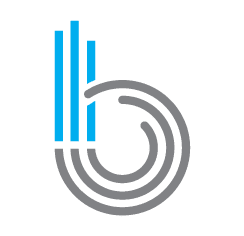We live in an age where everything from airport security to credit cards companies are successfully running social media accounts to gain brand recognition. Surprisingly enough, TSA boasts over 400,000 followers on Instagram, bringing an unexpected humor to the monotonous, yet important business of airport security. Social media is becoming the major touchpoint to many organizations’ audiences.
So despite the industry, there’s always room for a social media presence. Whether it’s through humor, storytelling, or striking photography, making the account mimic a company’s values is key.
Recently joining the social media game are Economic Development Companies (EDC). Set out to change the perception of the governmental agencies, Economic Development Companies are bringing their values to life through well-thought-out brand identities on social media.
If you’re considering how to use social media to represent your Economic Development Company brand or want a few pointers to enhance the presence, here are five ways to make the most on social media:
1. Start With LinkedIn
While there are many platforms that an Economic Development Company can leverage, LinkedIn tends to be the best platform for the job. On a spectrum, LinkedIn skews more formal and professional, reaching an ideal audience forEconomic Development Companies. From business professionals small and large to community ties, LinkedIn easily connects people and organizations on the engaging, metric-friendly platform.
Appealing to “higher-ups,” site selectors, or real estate brokers may be difficult on a social media platform on the opposite end of the spectrum, such as Pinterest or Vine. The business-savvy audience that your city needs is likely already on LinkedIn. First, leverage the platforms your audience is already on and then expand to more niche platforms.
2. Talk, Don’t Shout
When it comes to deciding what content to post on your channels, always consider what your audience would find interesting. Social media is not a microphone for self-promotion, but rather a chance to connect with your audience. To do this, balance your feed with both organic content (e.g., self-written blogs that add value) and earned content (e.g., aggregated articles that offer useful content).
Keep in mind the C-Suites as well as the community when posting. Guide your content to address the pain points, interests, or questions of both, and consider how to bridge the gap. Create a series that highlights the great things businesses are doing in your city. This will spark engagement within the community as they recognize or discover new local businesses. This series will also speak to site selectors and developers, proving your city’s dynamic landscape. Think about your audience first, and piece in how you fit into the conversation, second.
3. Tell Your Story
Every city is a different story, from the businesses to the people to the landscape. Find out what sets your city apart and run with it. Social media is the perfect outlet to create a campaign, blog series, or hashtag that brings your community to life.
Profile the people that are the true drivers of economic development — the business owners, visionaries, and site selectors. The economic development team of Midlothian created a Why Midlothian? blog series for social media, which tells the story of the local businesses, entrepreneurs, and renowned companies that chose to build their business on Midlothian soil. Let the businesses and community be the voice of your city; after all, who can tell it better than those that define it.
4. Vary Your Media
To boost impressions and avoid becoming stagnant on social media, go beyond simply sharing links. Decorate your feed with pictures, videos, and infographics. This makes your feed much more scannable and visually interesting. Researchers found that colored visuals increase people’s willingness to read a piece of content by 80 percent. That’s a pretty powerful persuasion. Make sure your visual elements remain consistent and recognizable for your Economic Development Company.
Take Michigan Economic Development Corp., for example. Scroll through their feeds and you’ll come across a mix of striking Michigan photography, videos, and photos. Just with a quick scroll of the page, you get a strong feel for the community involvement and booming industries that come from Michigan.
5. Widen Your Target
Once you have your basic elements in place — a powerful platform, good content, compelling stories, and diverse media — it’s time to boost it to the masses. (The right masses, that is.) Facebook and LinkedIn are great advertising platforms with highly targeted capabilities.
Facebook, especially, has the ability to boost a post to a narrow group. This not only increases how many people are seeing your content but ensures who is seeing it. For example, your post on “5 Real Estate Trends That Affect Shopping Centers” can be targeted at retail developers to make a bigger impact.
Challenge yourself to look at social media from a new perspective. It has the power to generate leads, instill community connection, and create positive awareness all on a platform your audience is already using daily.

